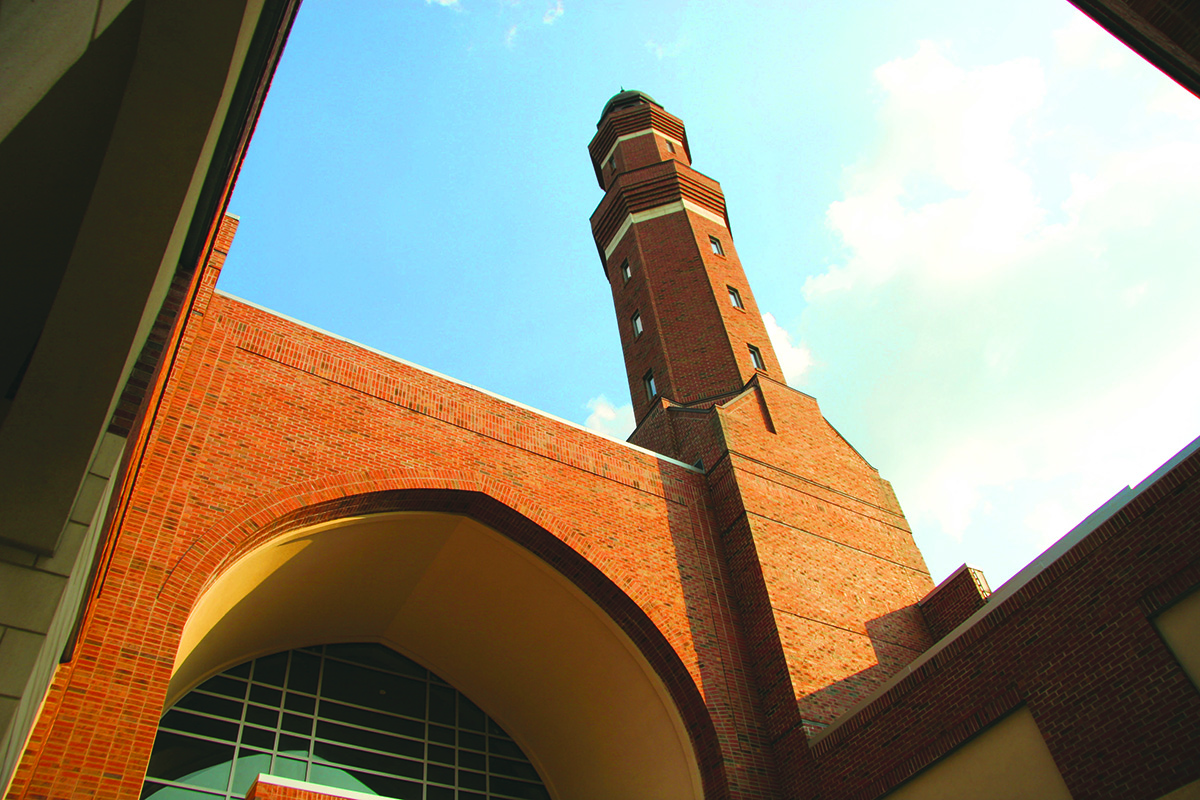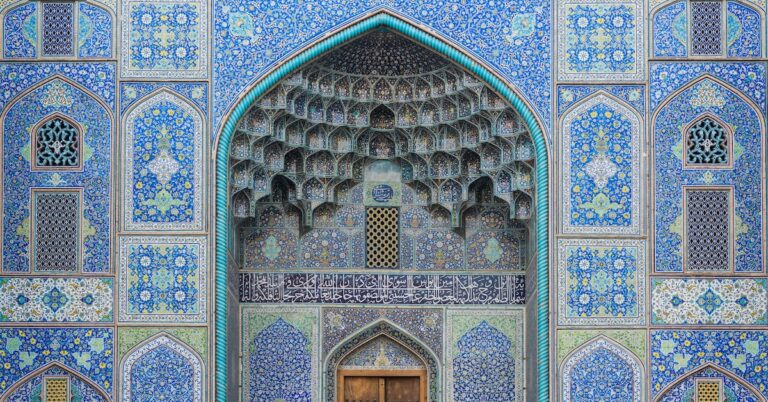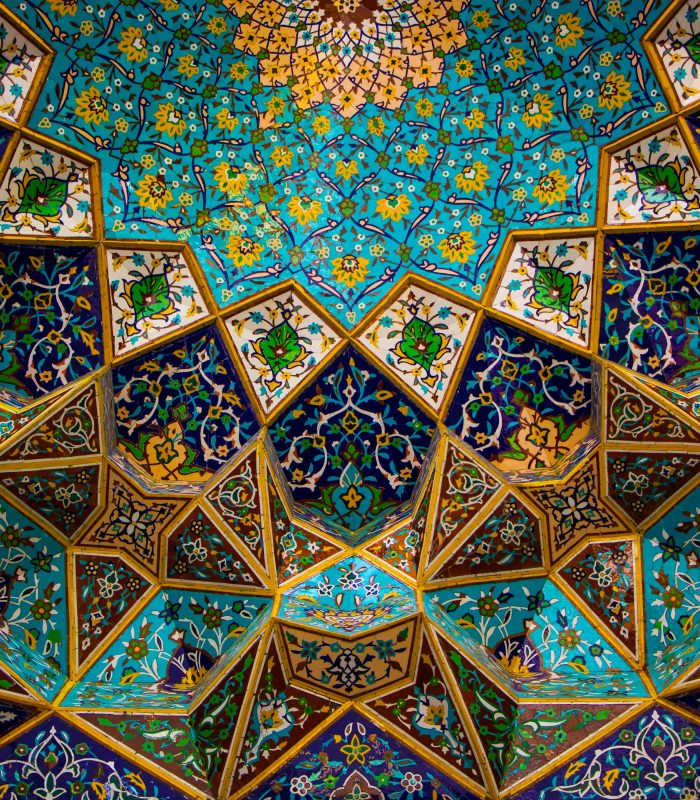
Top 10 Mosques in North America
As-Salaam Alaikum Halal Nomads, North America is home to a growing and diverse Muslim community, and with that diversity comes some of the most stunning mosques in the world. These mosques are not just places of worship but also cultural and architectural landmarks that reflect the rich heritage of Islamic art and design. Each mosque tells a unique story, from the intricate calligraphy and towering minarets of traditional mosques to the sleek, modern structures blending into urban landscapes. We will explore some of the most beautiful mosques across North America, showcasing their architectural splendour and significance to their communities.
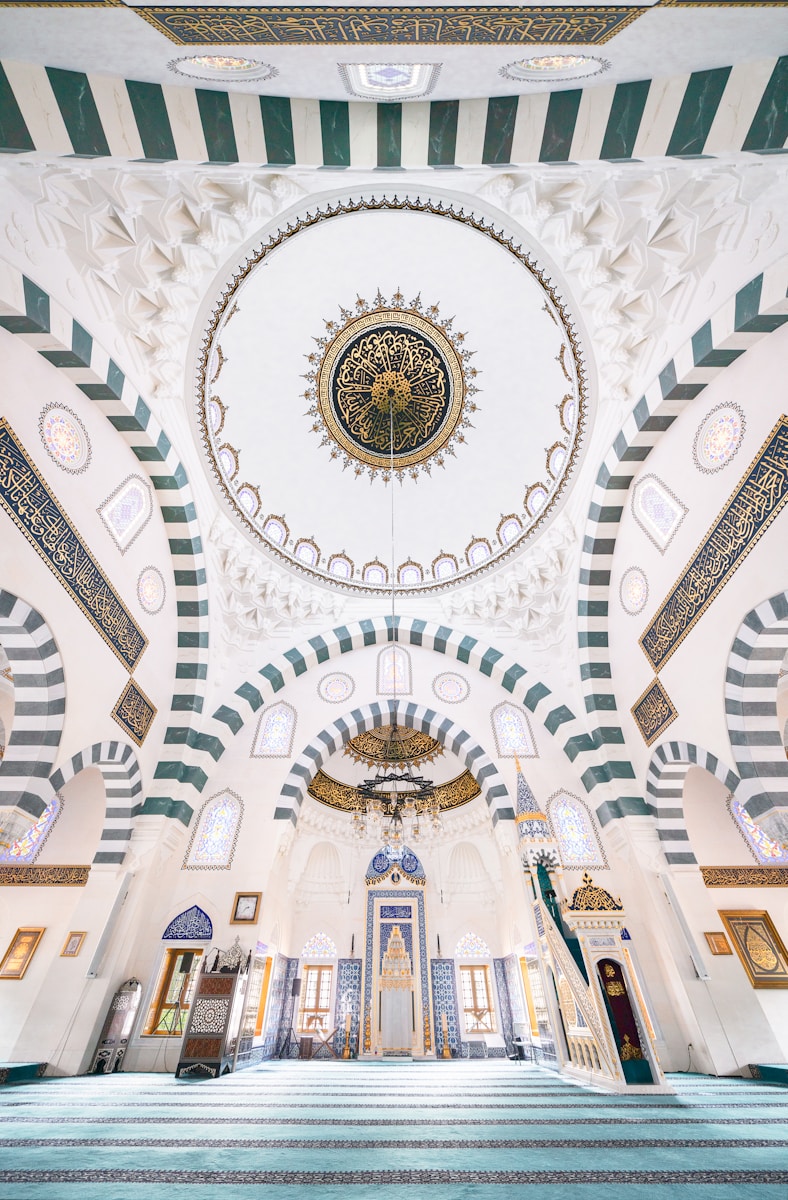
Diyanet Center of America
Location: Lanham, Maryland
The Diyanet Center of America in Lanham, Maryland, is a breathtaking masterpiece of classical Ottoman architecture and one of the most remarkable Islamic complexes in the Western Hemisphere. Funded and supported by the Turkish government, the center was inaugurated in 2016 and serves as a significant cultural bridge between Turkey and the United States.
The entire complex evokes the grandeur of historic mosques in Istanbul, featuring a central mosque built with imported Turkish marble, a magnificent main dome, and elegant, pencil-thin minarets. The interior is a feast for the eyes, adorned with hand-painted tile work and masterful calligraphy meticulously crafted by artisans in Turkey.
The Diyanet Center is far more than just a mosque; it is a sprawling cultural village. The complex includes a large research center, a guesthouse, an exhibition hall, and a traditional Turkish bath (hamam). It regularly hosts educational seminars, art workshops, and cultural festivals, making it a dynamic hub for the Turkish-American community and a valuable resource for anyone interested in learning about Islamic civilisation. Its authentic design and multifaceted programs make it a unique and invaluable institution in North America.
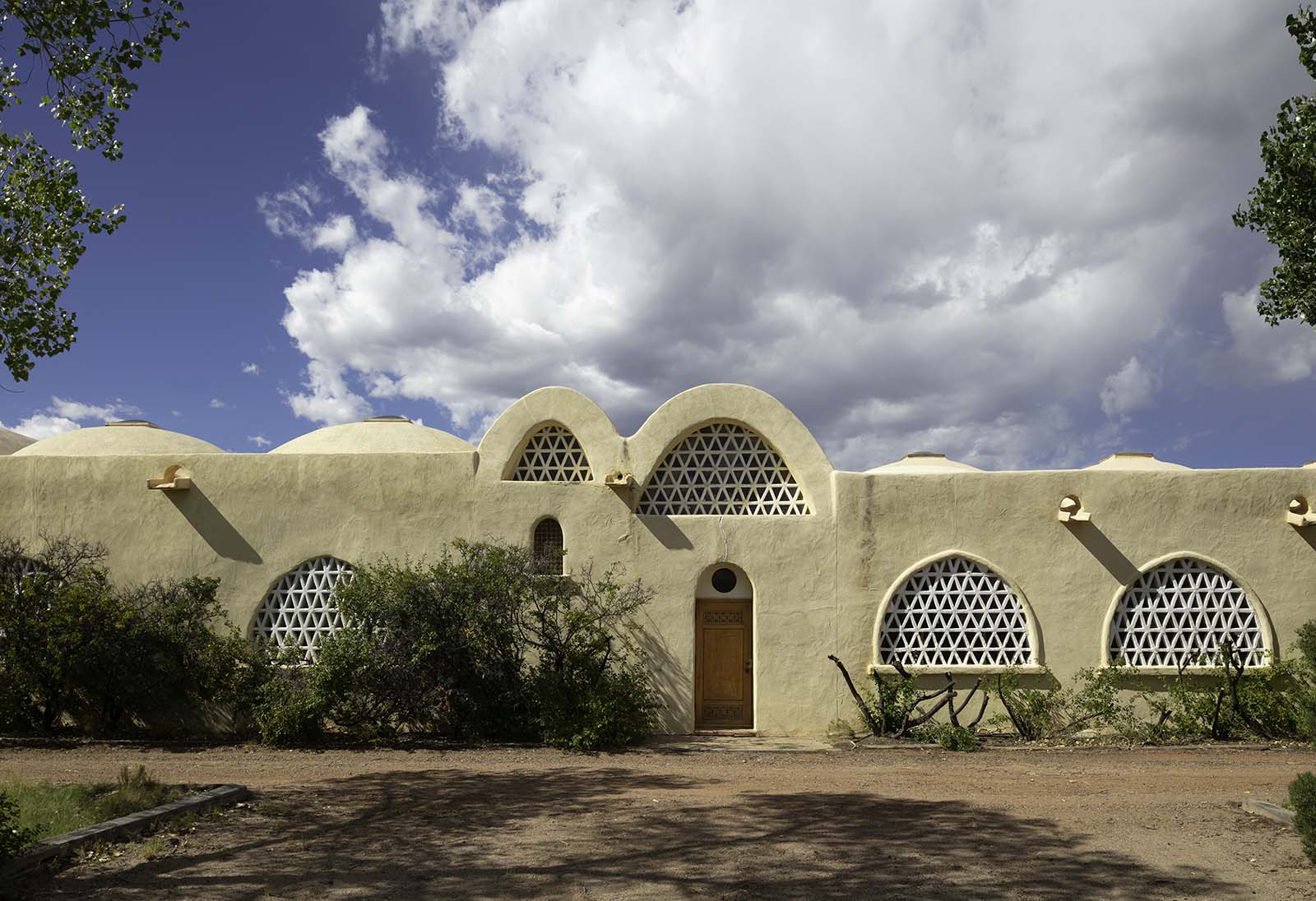
Dar al-Islam
Location: Abiquiu, New Mexico
The beauty of Dar al-Islam is unique and profound, stemming from its perfect harmony with the stark, high-desert landscape of New Mexico. It is not a conventional mosque but a purpose-built village and spiritual retreat designed for deep learning and contemplation.
Established in the early 1980s and constructed entirely from adobe, the traditional building material of the American Southwest, the structures blend seamlessly into the dramatic, sun-baked landscape. The genius lies in the fusion of Nubian Egyptian style with Southwestern vernacular architecture, creating a sublime and organic aesthetic.
The design incorporates classic Islamic principles such as vaulted roofs, graceful domes, and shaded interior courtyards, all realised through local materials. The main prayer hall is a space of quiet beauty and simplicity, encouraging a deep connection to the natural surroundings. Over the years, Dar al-Islam has served as a centre for educational programs, workshops, and spiritual retreats for Muslims from across the globe, offering a tranquil environment for study. Its remote location and unique architectural integrity make it one of the most exceptional Islamic sites in North America.
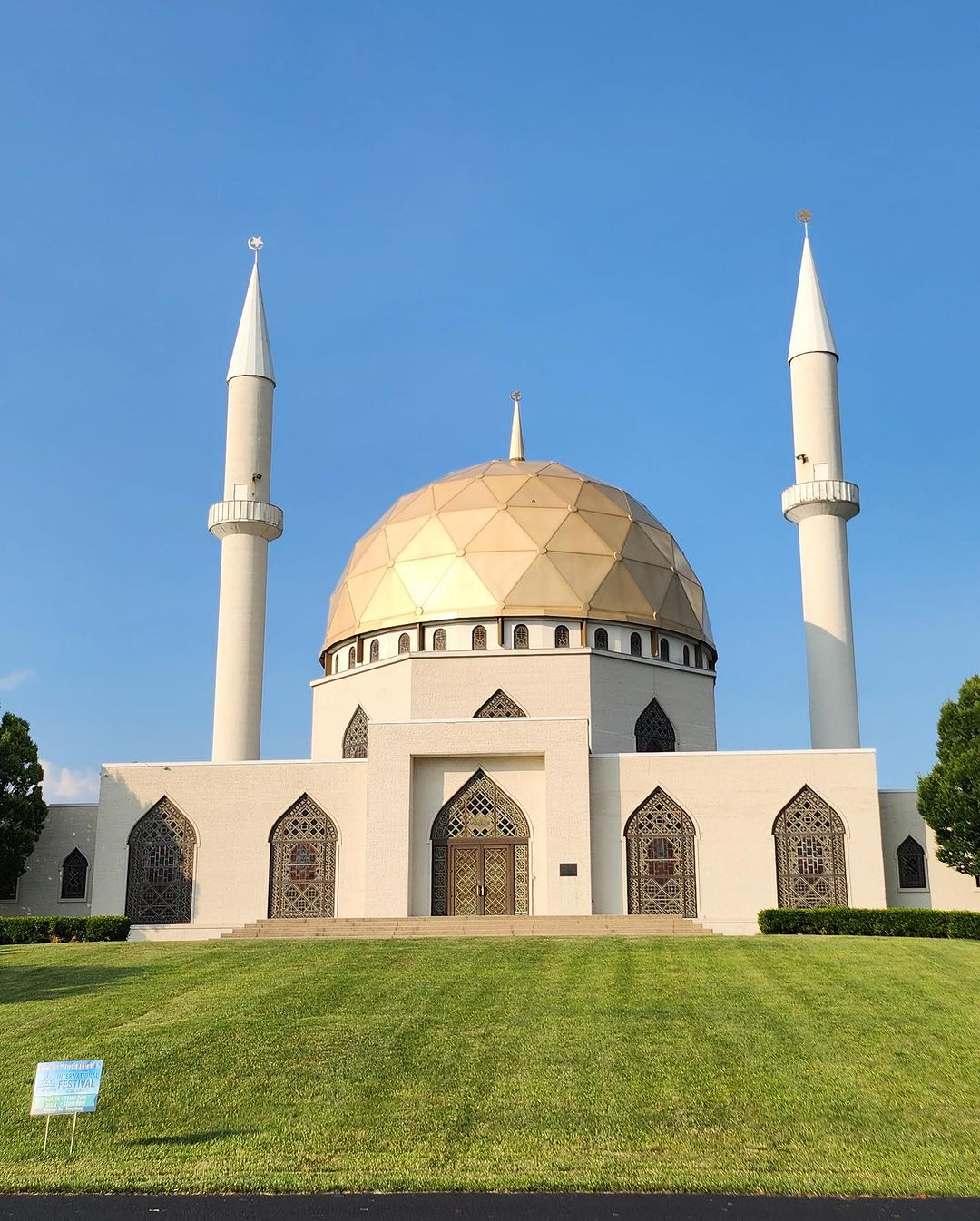
Islamic Center of Greater Toledo
Location: Perrysburg, Ohio
The aesthetic appeal of the Islamic Center of Greater Toledo comes from its picturesque and elegant design set within a serene natural environment. Established in 1983, it has graceful arches, a majestic central dome, and two perfectly proportioned minarets that create a dramatic and beautiful silhouette against the Ohio sky.
The choice of its location was intentional, with the mosque situated on a large, sprawling campus that includes a tranquil pond and well-maintained gardens, enhancing its visual harmony and creating a peaceful and welcoming atmosphere for worship and contemplation. This makes it one of the most photogenic and architecturally pleasing mosques in the country.
From its very inception, the Islamic Center of Greater Toledo has also been a trailblazer in community outreach and interfaith dialogue. It has a long-standing tradition of opening its doors to neighbours of all faiths, hosting educational tours, open houses, and collaborative events aimed at fostering mutual understanding and respect. This proactive approach to building bridges has made it a model for other Islamic institutions across the United States. It is not only a spiritual home for the Muslims of Northwest Ohio but also a cherished community landmark that stands as a powerful symbol of religious harmony.
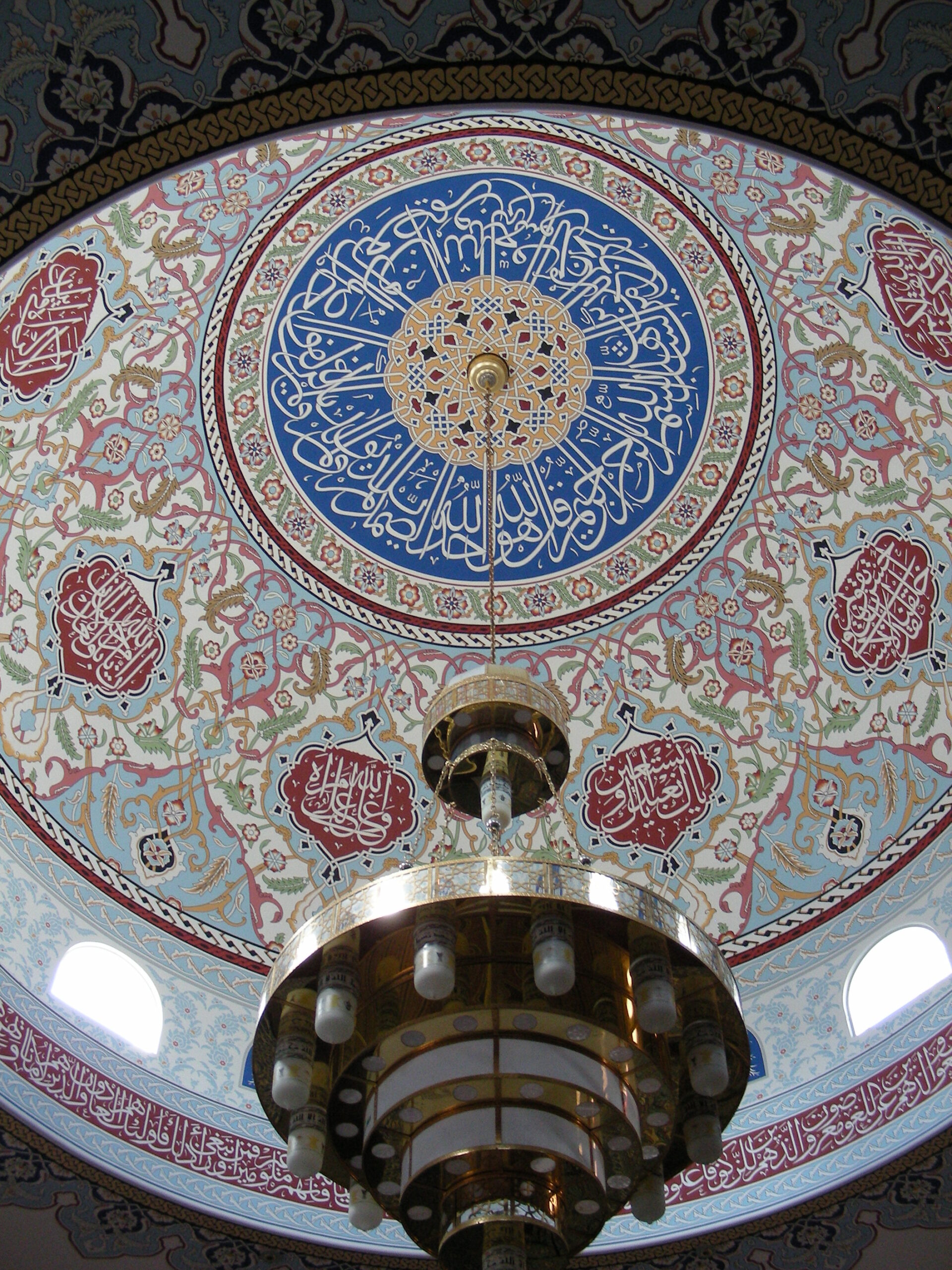
King Fahad Mosque
Location: Culver City, California
The King Fahad Mosque is a gem of modern mosque design, celebrated for its elegance and thoughtful details. A gift from Saudi Arabia to the Muslim community of Southern California, it opened in 1998 and stands as a significant architectural landmark. Its beauty is found in its well-proportioned structure, from the soaring 70-foot-tall minaret to the welcoming public plaza with its beautifully tiled fountain.
The mosque’s most distinguishing features are its unique triangular stained-glass windows, which cast colourful patterns of light into the prayer hall and add a distinctive, contemporary touch to the building’s aesthetic. Inside, the expansive prayer hall is both grand and serene, accommodating more than 2,000 people.
The mosque is part of a larger complex that includes the Islamic Centre of Southern California. This centre is a bustling hub of activity, offering a wide array of services to the community. These include a full-time, accredited school, a bookstore, and extensive educational programs for all ages, covering topics ranging from Quranic studies to the Arabic language. It is a vital institution that provides spiritual guidance, education, and a strong sense of community for thousands of Muslims in the region.
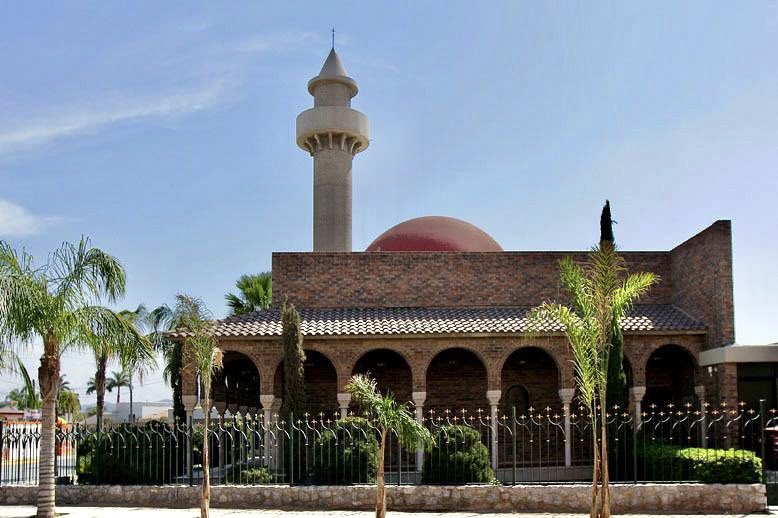
Suraya Mosque
Location: Torreón, Coahuila, Mexico
The Suraya Mosque holds a place of profound historical and cultural importance as the first purpose-built mosque in Mexico. Located in the city of Torreón, it was established in 1989 primarily by a community of Muslim immigrants, many of whom had roots in the Levant. Its beauty lies not in grand scale or ornate complexity, but in its pioneering significance and the unique architectural identity it created. The design is a modest yet elegant blend of traditional Islamic and Spanish-colonial architectural elements, featuring a simple, clean minaret and a distinctive dome. This fusion of styles makes it a unique landmark that reflects the interwoven identity of its congregation.
The mosque serves as the spiritual heart for the local Muslim community, a close-knit group that has played an integral role in the city’s civic life for decades. For the nascent and growing population of Muslims in Mexico, the Suraya Mosque is more than a house of worship; it is a foundational symbol of their history, perseverance, and identity on Mexican soil. Its simple, heartfelt beauty represents the planting of a seed of faith that continues to grow and flourish throughout the nation.
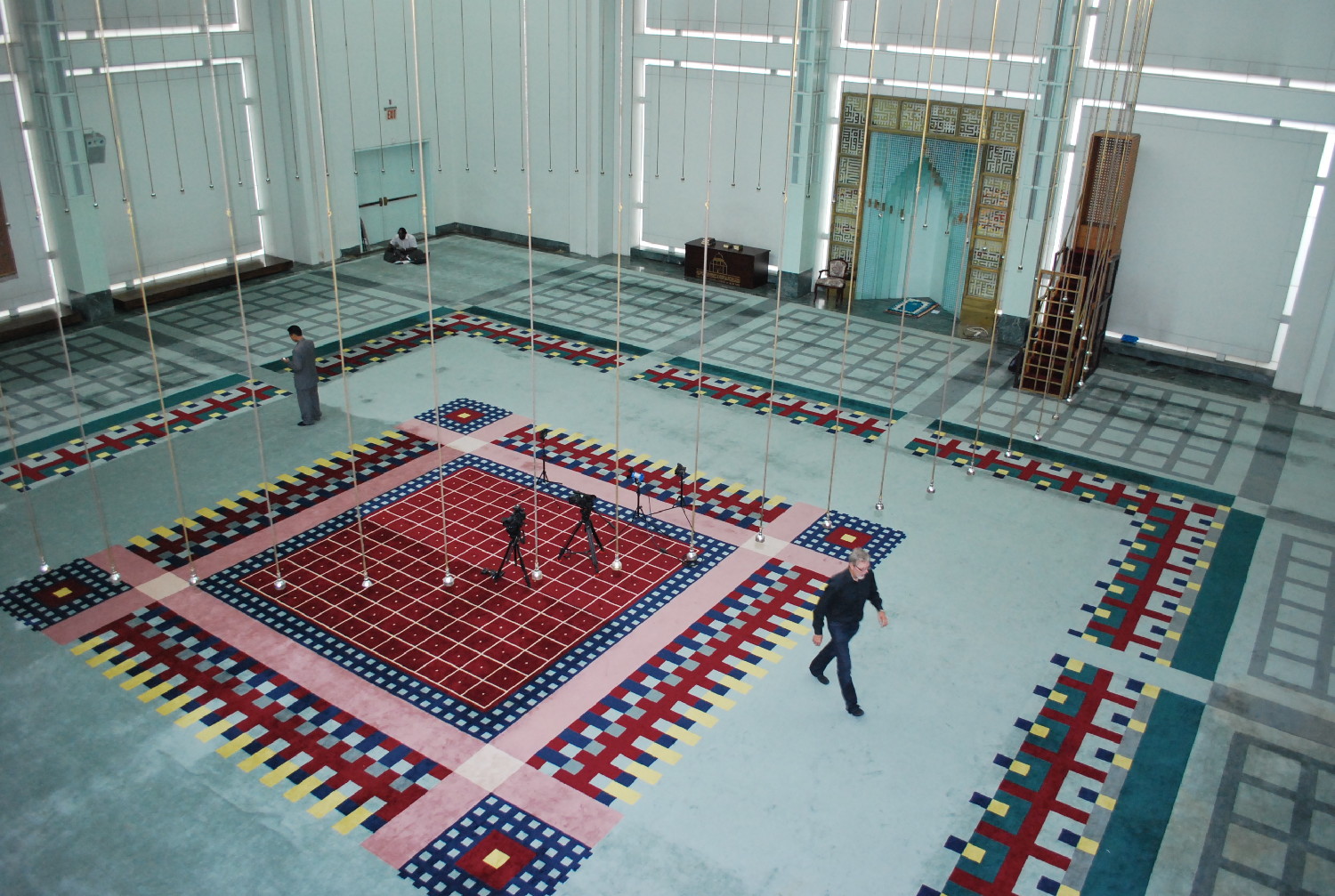
Islamic Cultural Center of New York
Location: New York, NY
The Islamic Cultural Center of New York is an architectural triumph of urban modernism and a landmark of faith in Manhattan. Opened in 1991, it was the first purpose-built mosque in New York City. Its beauty lies in the elegant and rigorous application of geometric principles, a core tenet of both Islamic art and modern design.
The structure is based on a pure cube, creating a powerful and serene presence. To orient the prayer hall towards Mecca, the entire building is famously rotated 29 degrees from Manhattan’s strict street grid, a move that is both spiritually necessary and architecturally dynamic. The façade is a beautiful composition of pink granite and glass, with strips of windows that create patterns of light within the column-free prayer hall.
A magnificent copper-clad dome sits atop the structure, supported by four massive steel trusses. The slender, free-standing minaret completes the composition. This mosque is a sophisticated and beautiful solution to the challenge of placing a traditional house of worship within a dense, modern cityscape, making it a significant cultural and architectural icon.
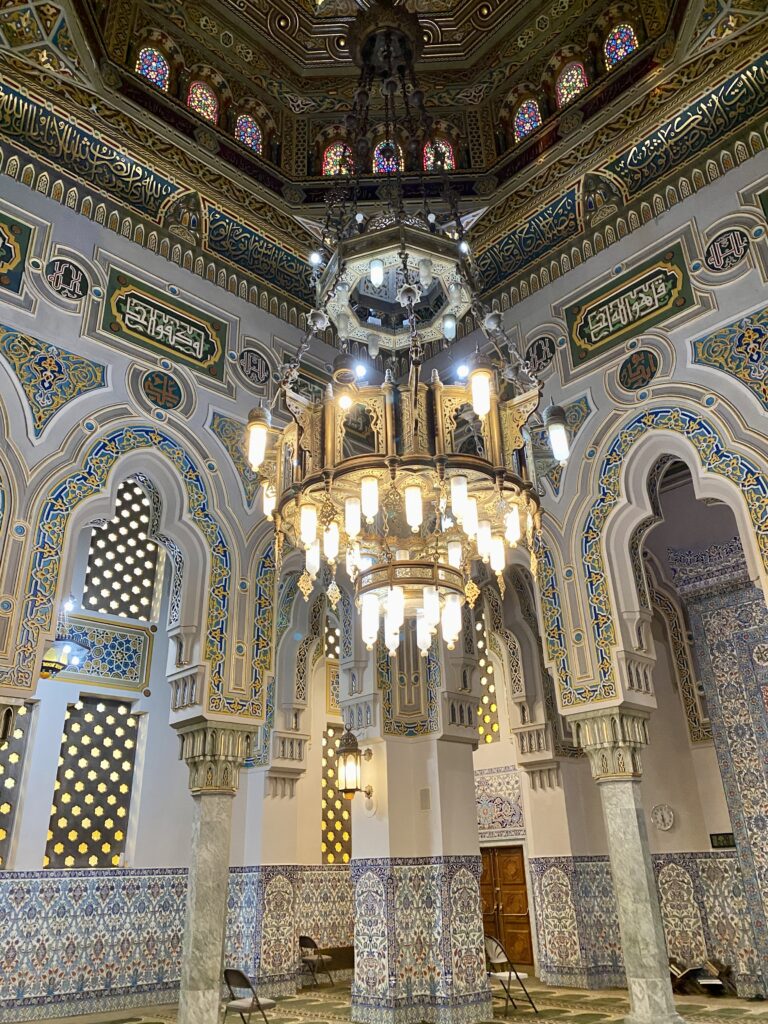
Islamic Center of Washington
Location: Washington, D.C.
The beauty of the Islamic Center of Washington is stately, historic, and dignified. Its prime location on Embassy Row demanded a design of diplomatic grace, which it achieves through a tasteful blend of different Islamic architectural traditions. Inaugurated in 1957, it was an early symbol of the global Muslim community in the heart of the United State’s capital. Its successful synthesis of Turkish, Persian, and Egyptian styles is a testament to the international effort that funded its construction.
Its enduring beauty comes from its elegant minaret, graceful archways, and the rich history it represents. The interior is famously decorated with gifts from numerous nations: the brilliant tile mosaics are from Turkey, the ornate crystal chandelier is from Egypt, and the plush carpets were a gift from Iran. This collection embodies a spirit of global unity and adds to the center’s unique charm. For over half a century, it has served not only as a primary mosque for prayers and festivals but also as a crucial hub for diplomatic and cultural engagement. It regularly hosts dignitaries and scholars, playing an active role in interfaith outreach and reinforcing its status as a powerful symbol of cross-cultural understanding.
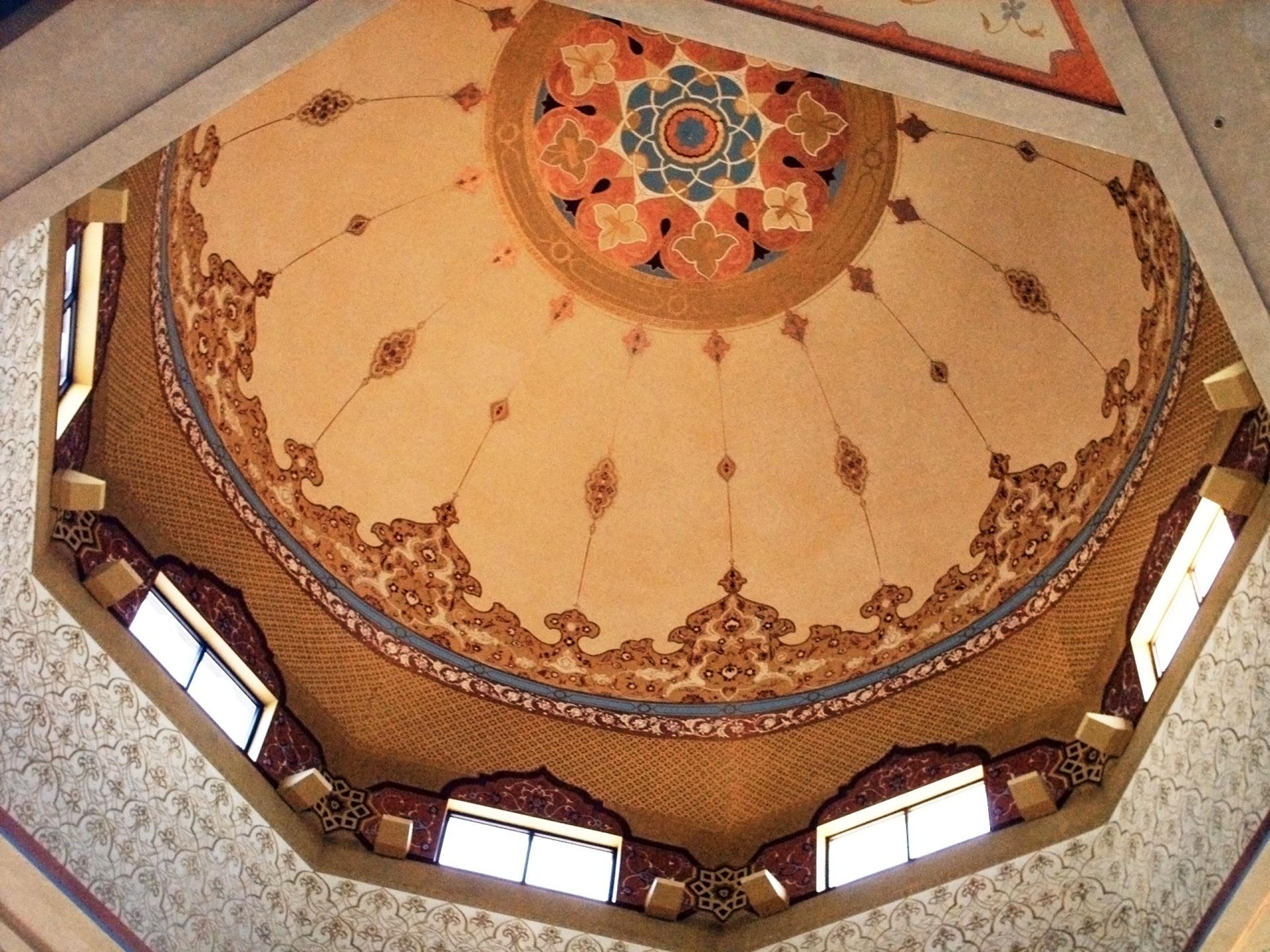
Al-Farooq Masjid
Location: Atlanta, Georgia
Al-Farooq Masjid is a handsome and prominent landmark in Atlanta, Georgia. Its beauty comes from its classic mosque design, gracefully executed with a large central dome and two towering minarets that are beautifully illuminated at night, creating a striking presence in the city.
The mosque has grown significantly since its humble beginnings, reflecting the rapid growth of the city’s diverse Muslim population. The current structure, completed in the early 2000s, stands as a visually appealing and proud symbol of the Muslim community in the Southeast, representing a familiar and comforting aesthetic for a house of worship. The masjid is named after Umar ibn Al-Khattab, a revered companion of the Prophet Muhammad known for his commitment to justice, and it strives to embody this principle in its community service.
Al-Farooq Masjid is much more than a place for daily prayers; it is a comprehensive Islamic center that serves as the heart of the community. It houses a full-time accredited school, offers Quran memorization programs, and provides a wide range of educational classes for adults. The mosque is also deeply committed to social welfare and outreach, operating a food pantry and actively engaging in interfaith initiatives.
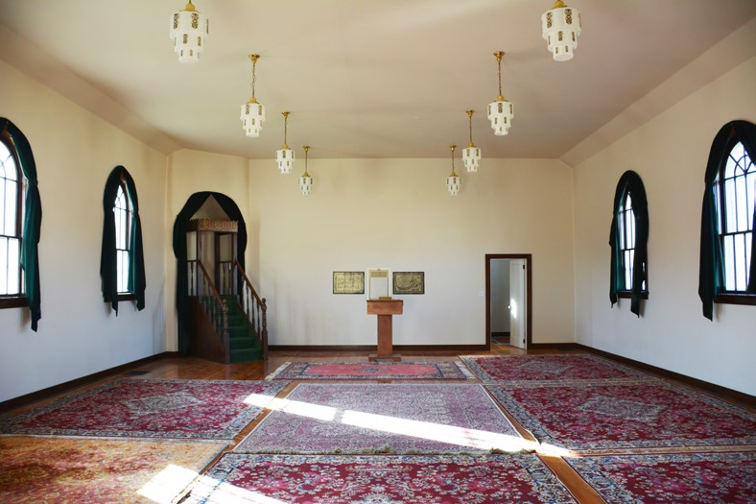
Al-Rashid Mosque
Location: Edmonton, Alberta
The beauty of the Al-Rashid Mosque is twofold, found both in its humble history and its vibrant present. The original mosque, built in 1938, was the very first in Canada. Its beauty lay in its charming simplicity—a small, four-square wooden structure that represented the faith and determination of a pioneering community of Lebanese immigrants.
The fundraising effort was famously led by local women who reached out to people of all faiths, making its creation a beautiful story of community collaboration. This cherished building was saved from demolition and now rests in Fort Edmonton Park as a historical landmark. Its nostalgic and meaningful story is a key part of its aesthetic appeal.
The modern Al-Rashid Mosque, built at a new location, carries on this legacy. It is a large, functional, and welcoming center that serves a large and vibrant congregation with a wide range of religious, educational, and social programs. Its beauty lies in the continuation of the community-building spirit of the pioneers who first established Islam on the Canadian prairies, linking the past to the present.
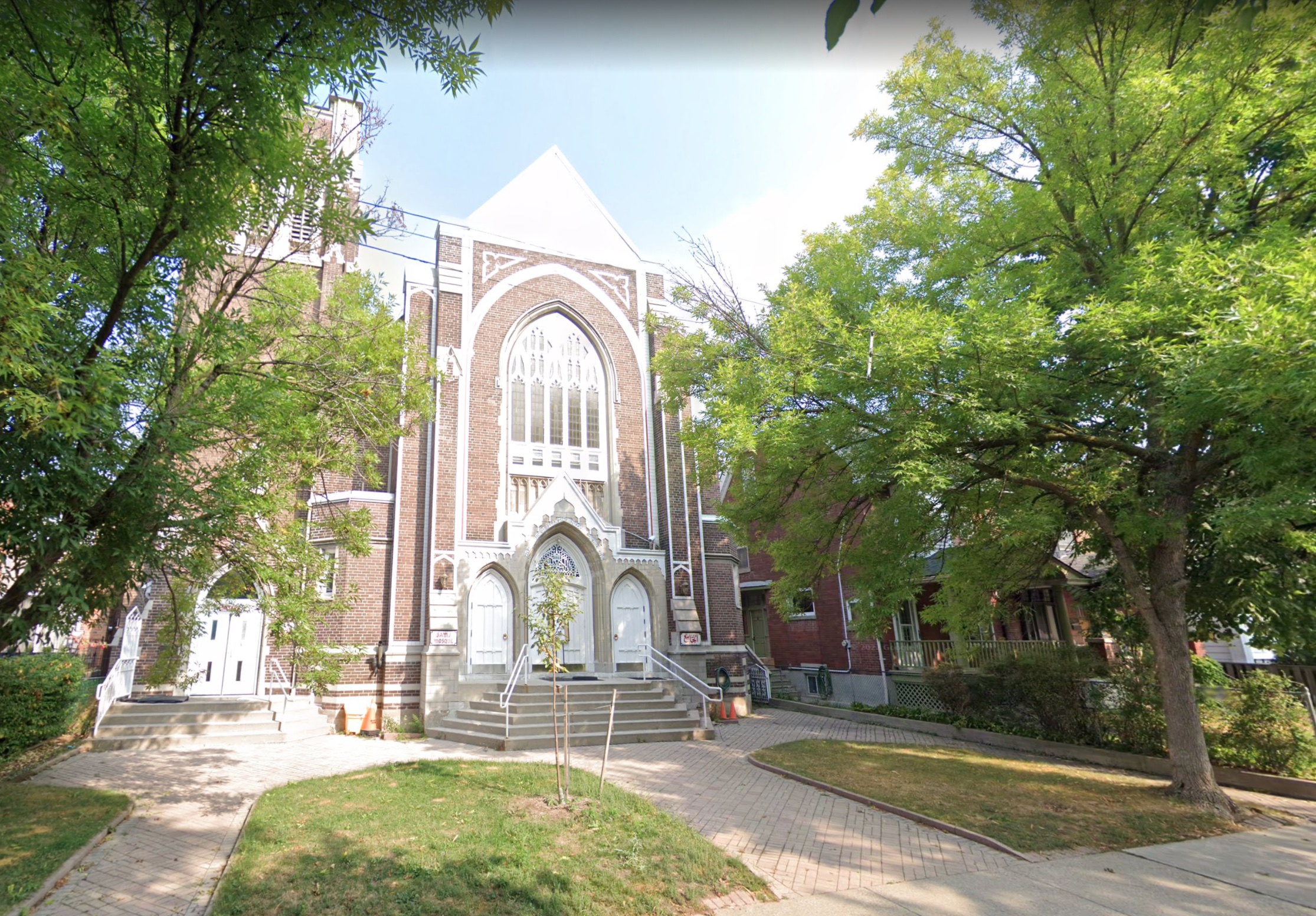
Jami Mosque
Location: Toronto, Ontario
The beauty of Toronto’s Jami Mosque is embodied in its remarkable story of transformation. Originally a Presbyterian church built in the Romanesque Revival style, its aesthetic is a unique blend of historical Christian architecture and Islamic functionalism.
The building was purchased by the local Muslim community and converted into the city’s first major Islamic center in 1969. This act of adaptation is the source of its beauty, representing a historic building given new life and a new spiritual purpose. While it retains some of its original exterior features, its interior has been fully adapted for Islamic worship. Known affectionately as the “mother of all mosques” in Toronto, it played a pivotal role in the establishment of numerous other Islamic institutions across the region as the community grew. For decades, it was the primary center for Islamic life in the city.
Generations of Muslims have passed through its doors for prayers, weddings, and funerals. Jami Mosque remains a vibrant place of worship, cherished by its community as a powerful and beautiful symbol of their history, adaptation, perseverance, and growth in Canada.
This journey across North America reveals a stunning mosaic of Islamic architecture, a powerful testament to the faith and cultural richness of the continent’s Muslim communities. From the breathtaking Ottoman grandeur of the Diyanet Center in the United States to the pioneering history captured in Canada’s Al-Rashid Mosque and Mexico’s foundational Suraya Mosque, each institution tells a unique story. This diversity in design—spanning from desert adobe to urban modernism—reflects the multifaceted heritage of the communities that built them in all three nations, creating a distinctly North American Islamic identity.
But as this list demonstrates, a mosque is always more than its dome and minaret. These beautiful structures are the beating hearts of vibrant communities. They are sanctuaries for prayer, centers for education, and hubs for essential social services and charity. In an increasingly complex world, they also serve as crucial platforms for interfaith dialogue, building bridges of understanding and dispelling misconceptions. Their doors are open not just for worship, but for fostering a sense of belonging and civic engagement.

